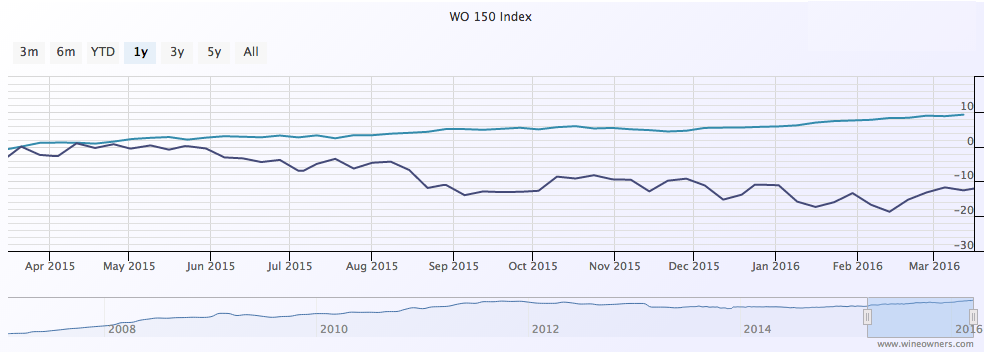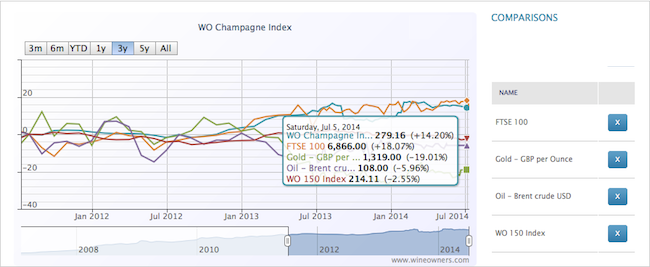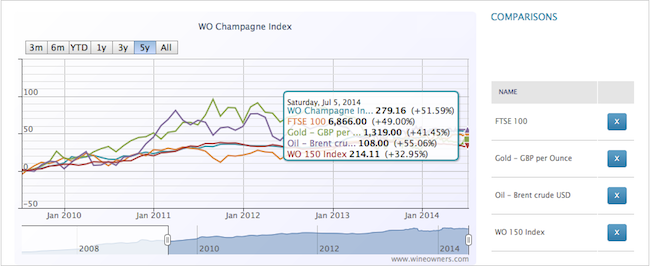by Wine Owners
Posted on 2016-03-16
As of March 12, 2016, the WO 150 Index recorded gains of 9.18% in comparison to the FTSE100 index which made a loss of -12.57% (Base price comparison March 12, 2015)
The graph below illustrates how Wine Owners Index has consistently produced higher returns in comparison to the FTSE100. Could such a trend be explained through the huge uncertainty surrounding the global economy in recent months as seen through the crash in stock prices on 'Black Monday' in China or the increasing popularity of wine as a whole as an alternative investment asset? Regardless, the case has once again been made on the role wine plays as a 'safe haven' asset in our volatile financial climate, a wonderful addition to any portfolio.

What does 2016 hold for the collector?
GET YOUR FREE REPORT TODAY
by Wine Owners
Posted on 2014-07-14
The performance of the Wine Owners Champagne Index has been nothing short of stellar - outperforming most other assets over the last 3, 5 and 7 years.
Over the last 12 months, however, the index has stagnated, registering a measly 0.5% growth.
Much was said of Champagne as an investment during the course of 2013. In sharp contrast to other fine wine regions, production quantities tend to be vast, but so is consumption. Analysing the performance of the Champagne market shows that appreciation is entirely driven by the very top vintages. With no stellar vintage such as 1996 or 2002 due for imminent release, we said in the first quarter of 2014 that the vintage Champagne market may drift over the next 1-2 years, though very top back-vintages may well benefit as supply dries up, and Champagne styles suited for long ageing such as Salon may continue to firm.
6 months on, this has indeed proved to be the case, with the top performers over the last 12 months to July 2014 being Jacques Selosse Blanc de Blancs Millésimé 1996 (+40%), Krug Clos de Mesnil Blac de Blancs 1996 (+28%) and Salon Cuveé ’S’ Le Mesmil Blanc de Blancs 1996 (+16.5%). This shows the value of relative scarcity, age and a top vintage - the perfect combination for future returns in a market otherwise dominated by exceptionally high volume production.
The poorest performers over 12 months have been Taittinger Contes de Champagne Blanc de Blancs 1996 (-9%) and 1998 (-28%), along with Dom Perignon 1998 (-11%).




